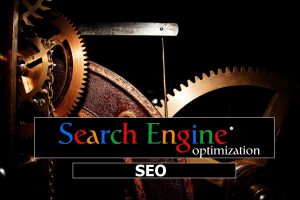Making Web Browsers Accessible and Inclusive

The internet offers revolutionary access to information, education, employment, services, and interpersonal connections that enrich life experiences. Yet for many individuals with disabilities, browser tools predicated on sighted experiences erect barriers rather than empower access, effectively excluding segments from full participation. Ensuring equitable access relies on web developers and companies deliberately engineering mainstream browsers and sites for inclusive experiencesbenefiting all users universally through assistive features, adaptive interfaces, compliance with access standards, and design thinking centralizing often marginalized needs. This essay analyzes key access challenges around perception, comprehension, interface navigation and focus capabilities before detailing technical guidance, assistive integrations, legislative context and inclusive design processes enabling more accessible, empowering experiences for diverse users across ability spectrums. Crafting equitable online spaces uplifts society’s vulnerable while bettering experiences universally.
Common Barriers to Access
Myriad barriers across web interfaces undermine access daily for differently abled users spanning vision, hearing, mobility, neurological and cognitive contexts. Visually, limited screen reader support, unlabeled graphics, inconsistent navigation mechanisms, lacking text equivalents for crucial interface elements and unreliable color contrast ratios hamper parsing critical information streams for blind users. Video sans captions, unstructured information architectures and flashy animations complicate comprehension for some neurodivergent visitors. Those with limited mobility increasingly navigate cumbersome interfaces never designed for assistive devices like eye trackers replacing mouse inputs. Keyboard incompatibility similarly excludes those lacking fine motor skills. Overall lack of customization constrains experiences too. Myriad thoughtless assumptions limit universal utility.
Technical Accessibility Guidance
Thankfully, leaning on established technical guidance frameworks drastically improves accommodation. The Web Accessibility Initiative’s (WAI) Web Content Accessibility Guidelines (WCAG) 2.1 compilation co-authored with the W3C international standards consortium and accessibility non-profits, researchers and government agencies details exhaustive development practices for maximizing equitable access. Three ascending levels ensure content remains Perceivable, Operable, Understandable and Robust for all. Key Success Criteria spans offering complete text equivalents for non text elements, strong color contrast ratios, logical navigation order and reliance on arrow keys, interface predictability minimizing distractions, text resizing up to 200%, warning before auto-advancing elements, captions for audiovisuals, and many additional best practices amounting to ethical design consideration benefitting all users universally. Adhering to AA level guidelines delivers remarkably inclusive experiences.
Integrating Assistive Tools
Accessibility also relies on seamless assistive technology integration from screen readers for the visually impaired like JAWS, VoiceOver and NVDA to switch controls navigating interfaces for those lacking dexterity to translate websites into multiple languages instantly removing language barriers. Thankfully most modern browsers facilitate such tools for empowering experiences so long as web developers avoid actively obstructing them through accessibility errors which cascade breakdowns. For example, Microsoft Edge, Google Chrome and Mozilla Firefox offer robust screen reader support, high contrast modes, text scaling options, keyboard shortcuts for all functions, toolbars simplifying access point navigation like headings and form fields, caret browsing enabling precision focus control, and forced colors overriding poorly coded contrast ratios. Browsers shoulder ethical burdens ensuring assistive tech interoperability.
Standards and Guidelines
To secure adherence in absence of legal obligations alone, voluntary web accessibility standards emerged backed by NGOs and advocacy consortiums defining compliance criteria measurable through automated testing. Most influentially, the Web Content Accessibility Guidelines became globally recognized ISO standard 30071 cementing its best practices as formal development policy rather than suggestions alone. Automated testing against WCAG affirmation levels using web accessibility evaluation tools like Axe, WAVE, ANDI or similar then provides compliance assurance qualifying sites for badges like Trusted Web Accessibility and Disability:IN VPAT enhancing reputation. Structured progression pathways such as the BS8878 UK accessibility maturity model also assists entities incrementally bettering accessibility through Bronze, Silver then Gold tiers denoting culture change. Accessibility demands accountability.
Legal Accessibility Landscapes
Beyond voluntary efforts, stronger legislative measures regulate equitable access too, most expansively through the Americans With Disabilities Act prohibiting discrimination against those with disabilities within places of public accommodations including websites meeting nexus thresholds. ADA website litigation and settlements compelled accessibility uplifts industrywide. Additionally, 2018’s milestone 19-3 9th Circuit Domino’s Pizza ruling set key precedent deeming all commercial sites public accommodations subject to ADA obligations. Section 508 reforms also mandated all US federal agency websites meet access guidelines. Meanwhile Canada, UK and EU nations instituted similar statutes ensuring equitable web access as human right. Australia’s Disability Discrimination Act 1992 sparked 27 government web access lawsuit victories as well. Though enforcement remains challenging, legislation signals shifting expectations valuing inclusion.
Accessibility Development Processes
Practically transitioning to inclusive browser experiences relies on integrating access planning across web development lifecycles rather than deferring as post-launch compliance burdens alone. Frame accessibility as capacity enhancement rather than technical debt. Conduct user research capturing oft marginalized voices early, testing prototypes against assistive tools for efficacy. Audit frequently with automated accessibility scanners measuring adherence metrics, then devote 20% cycles to continuous access uplifts prioritized by user impact. Solicit disability community code reviews noting missed weaknesses from lived expertise perspectives. Most crucially, sustain access commitments as ability spectrum users provide vital insights benefitting all audiences universally through enhanced resilience and usability lifting constraints for broader populations too facing temporary or situational limitations spanning device types and contexts ultimately enriching collective digital experiences.
At its best, ethically designed and empowering internet technology dismantles societal barriers facing vulnerable communities rather than inadvertently reconstituting digital forms of marginalization all too common offline. Constructing equitable digital ecosystems demands deliberate inclusion processes and sustained access commitments centralizing multiply-abled perspectives, not just those privileged by full abilities and the designed defaults then exclusionary to millions globally. Moral technology uplifts all of humanity in shared dignity through empowerment, not oppression derived from indifference. Deep dedication towards access delivers universal truths of digital experiences at their fullest liberating expression.







